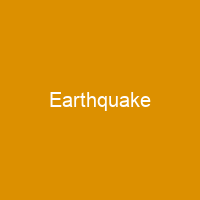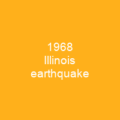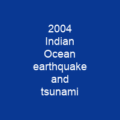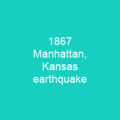Understanding Earthquakes: A Shaking Reality
Earthquakes are the shaking of the Earth’s surface resulting from a sudden release of energy in the lithosphere that creates seismic waves. Have you ever wondered what causes these powerful tremors? They can range from weak to violent, capable of damaging critical infrastructure and causing widespread destruction. The initial point of rupture is called the hypocenter or focus, while the ground level directly above it is the epicenter. Earthquakes are primarily caused by geological faults but also by volcanic activity, landslides, and other seismic events.
Effects and Impact
Earthquakes result in various effects such as ground shaking and soil liquefaction, leading to significant damage and loss of life. When the epicenter is located offshore, it can cause a tsunami. Earthquakes can trigger landslides and are influenced by tectonic movements along faults. The 1556 Shaanxi earthquake was one of the most devastating, with over 830,000 fatalities. Earthquakes also include tremors, quakes, temblors, marsquakes, and moonquakes.
Types of Faults
The point of initial rupture is called the hypocenter or focus, while the epicenter is the ground level directly above it. Earthquakes are caused mostly by geological faults but also by other events such as volcanic activity, landslides, mine blasts, fracking, and nuclear tests. The 1976 Tangshan earthquake was the deadliest of the 20th century, killing between 240,000 and 655,000 people. The 1960 Chilean earthquake had a magnitude of 9.5, making it the largest recorded earthquake.
Seismic Activity and Earthquake Types
The energy released during an earthquake increases exponentially with magnitude, with a thirty-fold increase for every unit of magnitude gain. The length and width of the faulted area contribute to the resulting magnitude, with the available width being the most important factor in determining maximum earthquake magnitude.
Earthquake Mechanisms
Tectonic earthquakes occur when stored elastic strain energy drives fracture propagation along a fault plane. The sides of a fault move smoothly until an asperity breaks, releasing stored energy in the form of seismic waves, frictional heating, and rock cracking. Only 10% or less of an earthquake’s total energy is radiated as seismic energy, with most being used to power fracture growth or converted into heat.
Earthquake Types
The three main types of faults are normal, reverse (thrust), and strike-slip. Normal and reverse faulting involve dip-slip movement, while many earthquakes have components of both dip-slip and strike-slip. The brittle crust can store elastic energy and release it in fault ruptures, with maximum rupture lengths ranging from 100 to 1,000 km. Reverse faults occur in areas of convergent boundaries where the crust is shortened, associated with powerful megathrust earthquakes. Strike-slip faults involve horizontal slipping past each other and can produce major earthquakes up to magnitude 8. Thrust faults have the highest stress levels, followed by strike-slip and then normal faults.
Earthquake Magnitude and Frequency
The energy released during an earthquake increases exponentially with magnitude, with a thirty-fold increase for every unit of magnitude gain. The length and width of the faulted area contribute to the resulting magnitude, with the available width being the most important factor in determining maximum earthquake magnitude.
Earthquake Prediction and Forecasting
Efforts to manage earthquake risks involve prediction, forecasting, and preparedness, including seismic retrofitting and earthquake engineering. The cultural impact of earthquakes spans myths, religious beliefs, and modern media, reflecting their profound influence on human societies.
Seismic Waves and Earthquake Detection
Earthquakes originate primarily at depths not exceeding tens of kilometers within the Ring of Fire, classified as shallow-focus earthquakes, mid-focus or intermediate-depth earthquakes, or those with focal depths between 70-300 km. In subduction zones, deep-focus earthquakes occur at depths of 300-700 km due to high temperature and pressure. Volcanic activity also causes earthquakes, which can serve as early warnings for eruptions.
Earthquake Clusters and Aftershocks
Earthquakes begin with an area of initial slip on a fault surface that propagates outward until it reaches a barrier or a region with insufficient stress. Rupture speed is constrained by the brittle-ductile transition zone and ground surface. Supershear earthquakes propagate at speeds greater than the S wave velocity, while slow earthquakes travel at unusually low velocities. Co-seismic overpressuring during an earthquake can increase pore pressure, affecting slip evolution and speed. Tides may trigger some seismicity.
Earthquake Swarms
Earthquake swarms are sequences of small earthquakes striking in a specific area within a short period. The world is divided into 754 Flinn–Engdahl regions based on political and geographical boundaries as well as seismic activity. Standard earthquake reports include magnitude, date and time, geographic coordinates, depth of epicenter, and other parameters.
Earthquake Effects
The effects of earthquakes include shaking and ground rupture: severe damage to buildings and structures due to a complex combination of earthquake magnitude, distance from the epicenter, and local geological conditions. Soil liquefaction occurs when water-saturated granular material loses strength and transforms into a liquid, causing rigid structures to tilt or sink.
Human Impacts
Earthquakes have significant human impacts: injuries and loss of life; damage to critical infrastructure; road and bridge collapse; communication systems disruption; loss of community services; general property damage. Landslides caused by earthquakes resulted in 42% of fatalities in China’s study group.
Tsunamis
Fires can be triggered by damaged electrical power or gas lines, and tsunamis are long-wavelength sea waves produced by sudden movement of large volumes of water. Such tsunamis travel 600-800 km/h, producing large waves that overrun coastal areas in minutes. Tsunamis can also travel thousands of kilometers across open ocean, causing destruction on far shores hours after an earthquake.
Floods
Floods are secondary effects of earthquakes if dams are damaged or landslips block rivers, leading to catastrophic flooding.
Earthquake Prediction and Forecasting
Earthquake prediction is a branch of seismology concerned with predicting the time and place of future earthquakes within limits. Earthquake forecasting assesses general earthquake hazards, including frequency and magnitude of damaging earthquakes in a given area. Forecasting systems can provide regional notification of an earthquake in progress, allowing people to seek shelter before the impact is felt.
Earthquake Engineering
The objective of earthquake engineering is to design structures to minimize damage from earthquakes. Existing structures can be modified by seismic retrofitting, and emergency management strategies can mitigate risks and prepare for consequences.
Individual Preparedness
Individuals can take preparedness steps like securing utilities and being educated on what to do during shaking. Earthquakes have been attributed to various causes throughout history, including ‘air (vapors) in the cavities of the Earth’ and tension between the earth and water.
Cultural Impact
Mythology and religion include Norse mythology’s Loki, Greek mythology’s Poseidon, Japanese mythology’s Namazu, and the New Testament’s earthquakes before and after Jesus’ death and resurrection. In popular culture, stories about earthquakes often begin with disaster and focus on its aftermath.
Conclusion
Earthquakes are a natural phenomenon that can cause significant damage and loss of life. Understanding their causes, effects, and how to prepare for them is crucial in mitigating the risks they pose. Whether it’s through scientific research or cultural beliefs, earthquakes continue to fascinate and challenge us.

You want to know more about Earthquake?
This page is based on the article Earthquake published in Wikipedia (retrieved on March 3, 2025) and was automatically summarized using artificial intelligence.







